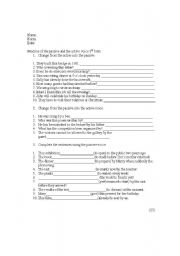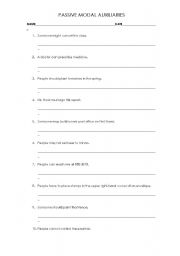
And notice that the words have been still do not change. My dog was supposed to have been taken to a friend’s house. The structure for this is: past tense form of be (with) phrasal modal + have been + the past participle. This includes the phrasal modals be supposed to, be able to and be allowed to. Then comes have been – which stays the same – plus repaired, which is the past participle of the verb to repair.īut for other phrasal modals – ones that contain the verb be – the be changes to past tense. My shoes should have been repaired last week. So, the structure becomes modal or modal phrase + have been + the past participle. How can you tell someone this using the past tense of modals and phrasal modals?įor all modals and some phrasal modals, the only difference is changing be to have been. But, some of the other things still need to be completed. Ok, now imagine that some of the things on your travel “to do” list are complete. And, cut is the past participle of the irregular verb to cut. Then comes the verb be, and its form does not change.

For example, in the sentence about the haircut, need is the modal. The structure is: modal or modal phrase + be + the past participle. But modals also include something called “phrasal modals” – phrases such as has to, ought to and be supposed to.Īs you heard in our examples at the start of the program, we sometimes need the passive form of modals and phrasal modals.īut, don’t worry! This is surprisingly simple. Words like can, could, may, might, must and should – and even will – are all modals. Modals are helping verbs that express possibility, ability, duty, permission or advisability.

Now, let’s move on to a quick reminder about modals: You may also recall that, for the passive voice, we use the structure be + past participle, as you noticed in all of the example sentences. But that is ok, because it is not very important to that statement. You may remember that, in a passive sentence, the person performing the action is not stated because it is not very important to know who that person is.įor example, in the sentence about the haircut, the listener does not know who will cut your hair. Here are some things that might need to be done:Īnd your dog is supposed to be taken to a friend’s house.Īll of these sentences use either modals or something called “phrasal modals," and they are in the passive voice. There is a lot that you need to do before you leave.

Imagine that you are planning to travel to another country.


 0 kommentar(er)
0 kommentar(er)
